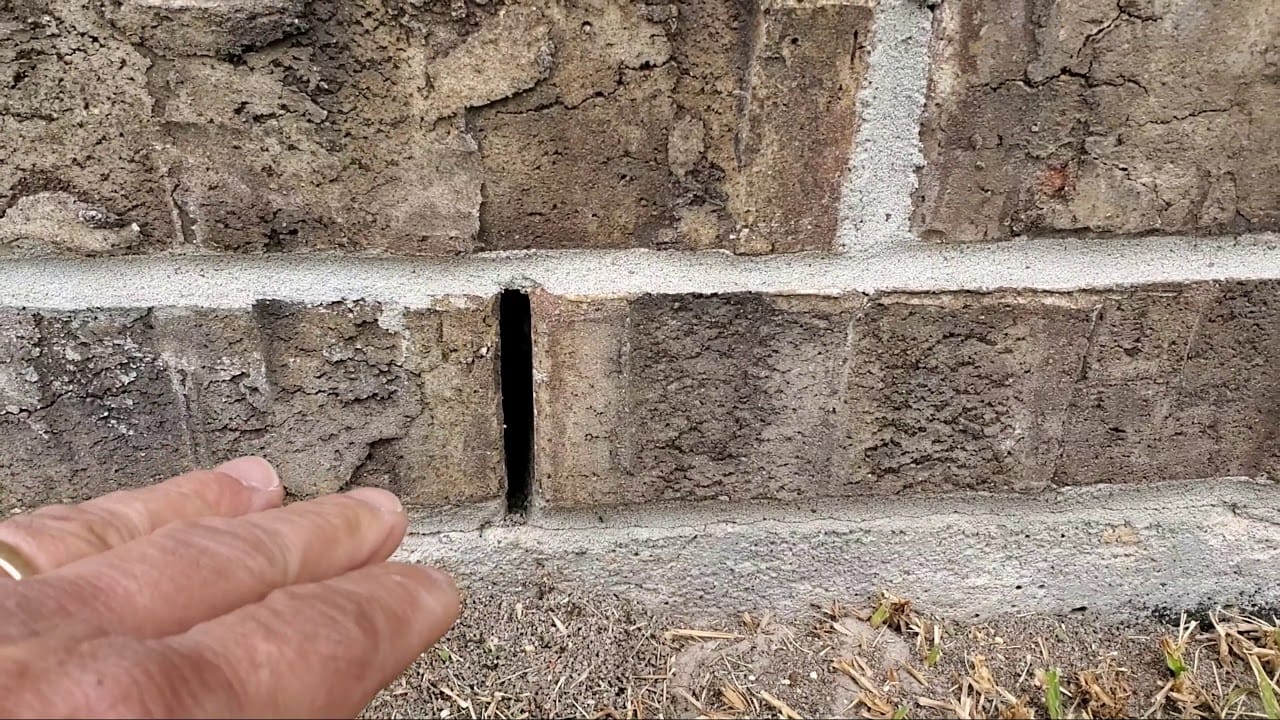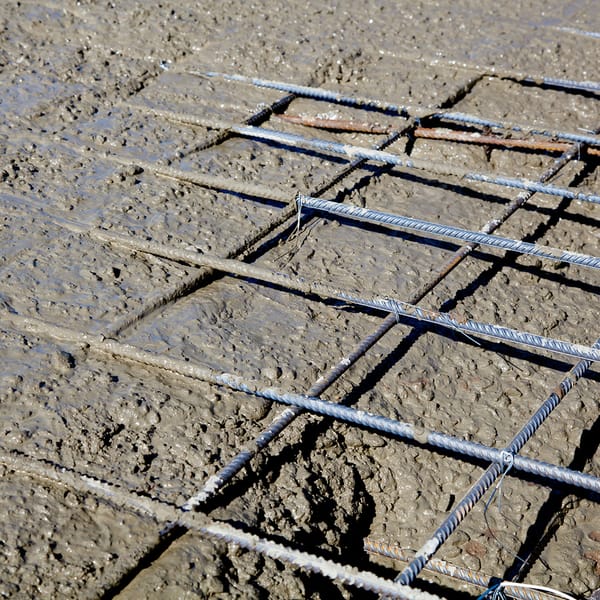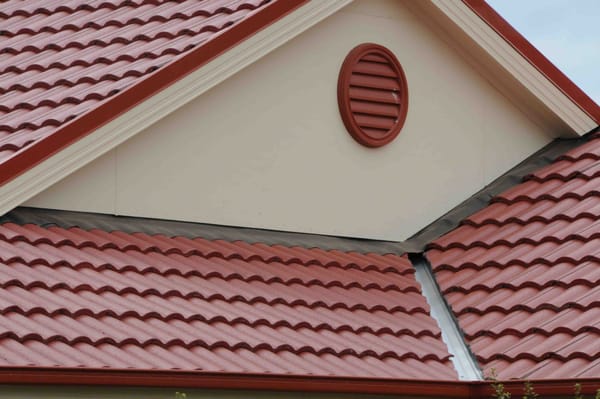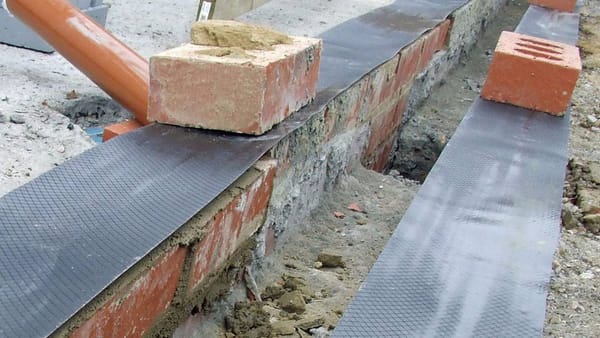Ever noticed those little holes in the brickwork of your home and wondered what on earth they're for? Well, wonder no more. Those little holes, known as weepholes, are an important part of your home's drainage system and ventilation. Without them, water could build up inside your walls and cause damage.
Weepholes allow moisture to escape from cavities in brickwork, preventing issues like damp and mould. In this article, we'll explore what exactly weepholes are, how and when they're installed, why they matter for your home, and how you can make sure they're doing their job. By the end, you'll be a weephole expert and know how these unassuming holes help keep your home happy and healthy.
What Are Weepholes?
They're small openings in exterior walls that allow moisture to escape. As water inevitably gets behind siding, brick, and stone walls during rain, weepholes drain it out before it can cause damage.
When are weepholes installed? Weepholes are put in place during the initial construction or renovation of a building. Bricklayers, stonemasons, and siding installers are responsible for including weepholes as they build up walls. It's important for water to have a path to flow out from behind the surface, so weepholes are built into the lowest course possible.
How do weepholes work? Weepholes use gravity to drain water down and out. As water flows down behind walls, it will eventually reach the weepholes and trickle out and away from the building. Weepholes also allow air to circulate, which helps surfaces dry out and prevents rot and mould.
Why do weepholes matter to you? Weepholes are important for the integrity and longevity of your home. Without them, water will collect and cause damage, rotting structural elements, damaging insulation, and promoting mould growth. By allowing moisture to escape, weepholes help ensure walls stay structurally sound and interiors remain dry, healthy living spaces.
To keep your weepholes working well, inspect them regularly and clear out any debris. You can also instal wire mesh over the openings to prevent insects from getting in while still allowing water to flow out. Weepholes may be small, but they play a big role in protecting your home.
Where Are Weepholes Installed and Why Are They Important?
If you own a home, weepholes are important to understand. These small holes in your brickwork allow water to drain from inside your walls to the outside, preventing damage.
Where are weepholes installed?
Weepholes are typically installed at the base of exterior walls, just above the foundation. You'll often find them along the bottom row of bricks, at the joint where the wall meets the footing. They can also be located around windows and doors, allowing water from leaks or condensation to drain.
Why are weepholes so important?
Without weepholes, water can get trapped within your walls, causing rot, mould, and structural damage. Weepholes provide an escape route, channelling water out and away from the base of the wall before it causes issues. They're a simple but crucial part of your home's weatherproofing and drainage system.
It's a good idea to inspect your weepholes regularly to ensure they remain clear of debris. You can gently vacuum or flush them out with a hose to keep water flowing freely. Blocked weepholes mean water will build up in your walls, so check them at least once a year or after heavy rains.
Your weepholes may be small, but they play an enormous role in keeping your home healthy and preventing costly damage. Understanding what they do and ensuring they stay clean is an easy way to avoid problems down the road. Give your weepholes some love, and they'll quietly protect your home for years to come!
How to Maintain Your Weepholes for Optimal Drainage
To keep your weepholes functioning properly, some basic maintenance is required.
Clear debris
Over time, dirt, leaves, and other debris can collect over the weepholes, blocking water flow. Check your weepholes regularly and clear away any debris with a brush. You can also flush them out with a hose to remove built-up sediment and grime.
Inspect for damage
Examine the area around your weepholes for any cracks, holes or other damage in the brickwork or mortar. Weepholes provide an entry point for water, so any damage needs to be repaired to prevent leaks into walls or the foundation. If you notice crumbling mortar or broken bricks, it's best to have the damage assessed and repaired by a professional bricklayer or tiler.
Prevent pest infestation
Weepholes can also attract unwanted visitors like insects, rodents and reptiles looking for shelter or access into your home. To prevent infestations, you may want to instal weephole grilles, covers or mesh over the openings. The grilles still allow for ventilation and drainage but block out pests. Check the grilles regularly to ensure they remain securely installed and clear of debris.
Service them periodically
For the best maintenance of your weepholes servicing them every 3 to 5 years is a good idea. Thoroughly clean them out, flush and inspect your weepholes to ensure they are clear and functioning properly. Servicing your weepholes helps to prevent major drainage issues from developing and ensures your weepholes are working to protect your home.
Keeping on top of these maintenance steps will help guarantee your weepholes continue to do their important job of channelling water away from your home’s structure. By clearing, inspecting and preventing issues with your weepholes regularly, you’ll avoid costly drainage problems down the track.
Conclusion
So now you know what weepholes are and why they matter. These hidden drainage outlets play an important role in keeping your home structurally sound and preventing costly water damage.
While they're easy to overlook, getting weepholes installed and maintaining them properly will give you peace of mind that your home's foundations are protected from excess moisture buildup.
Next time it rains, you can rest easy knowing that little holes in your brickwork are doing their job to channel water away from vulnerable areas. And if you do spot a weephole that looks blocked or damaged, get it checked out right away. A quick fix now could save you a world of trouble down the line.







